The Skin of the Earth
A Pele da Terra
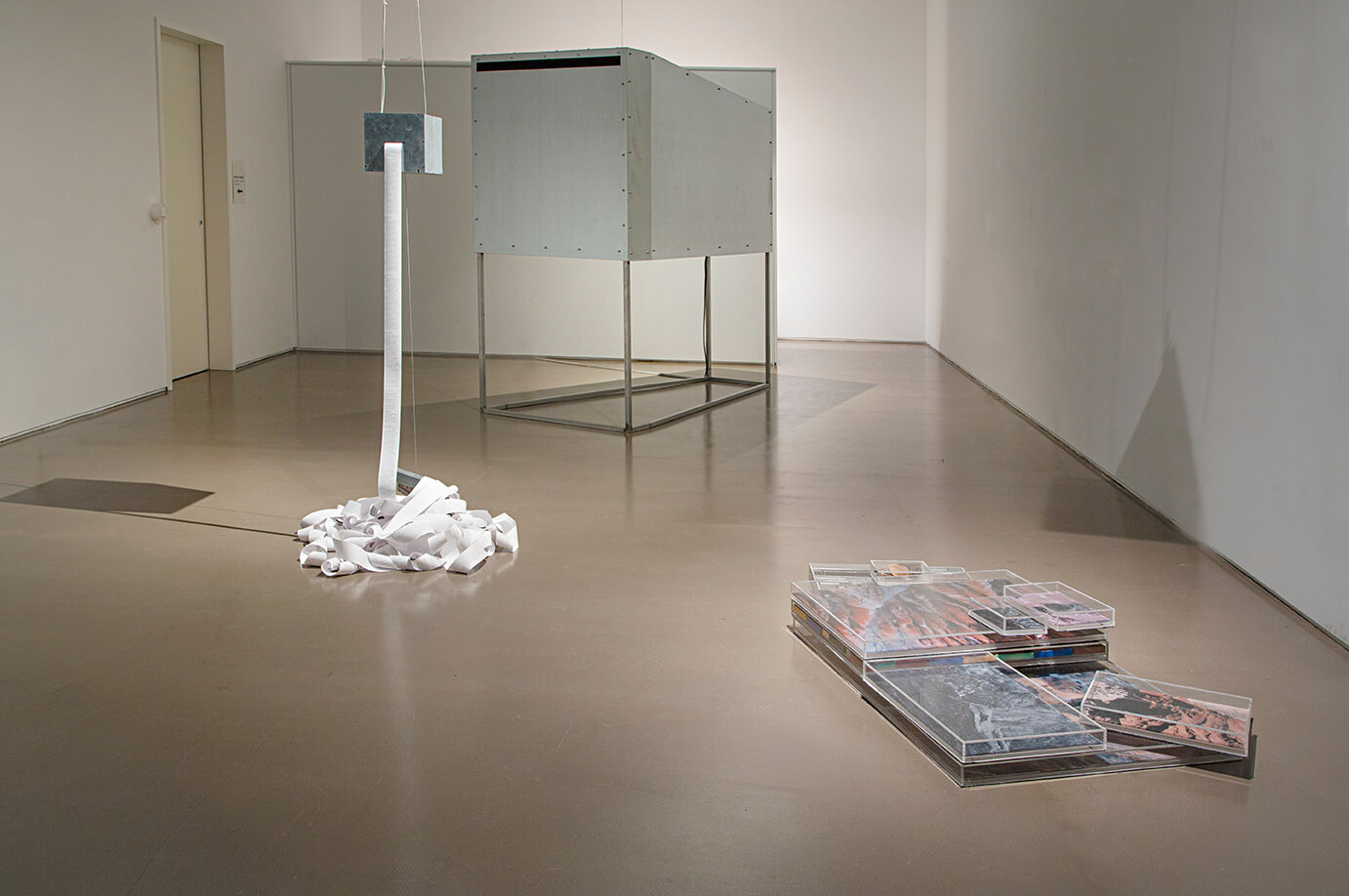
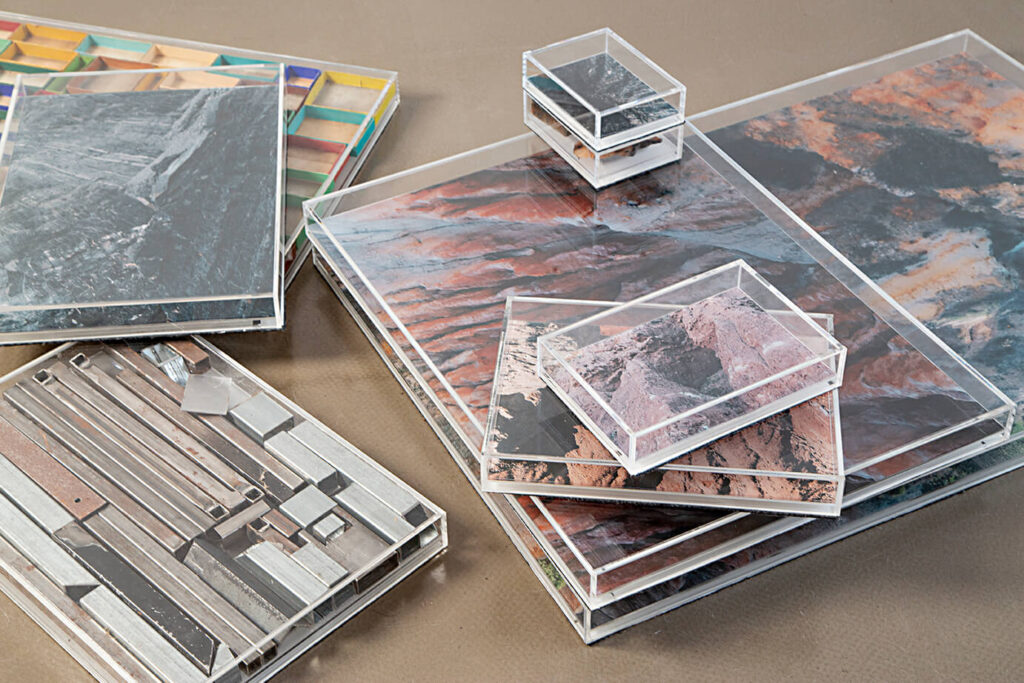
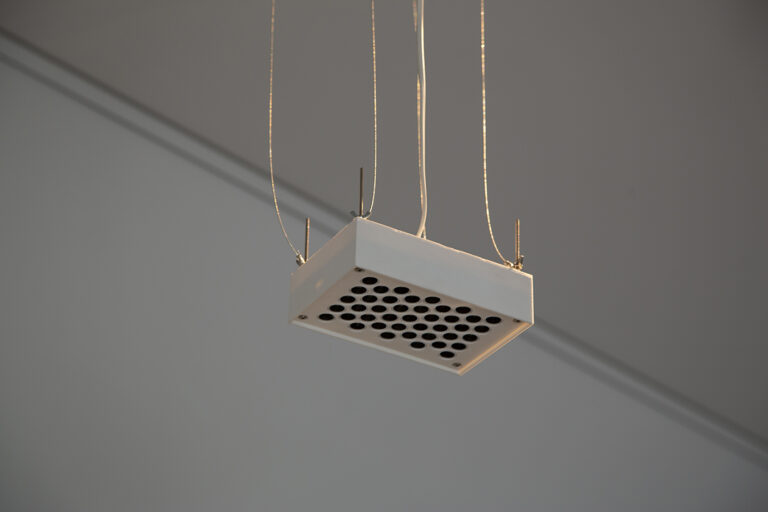
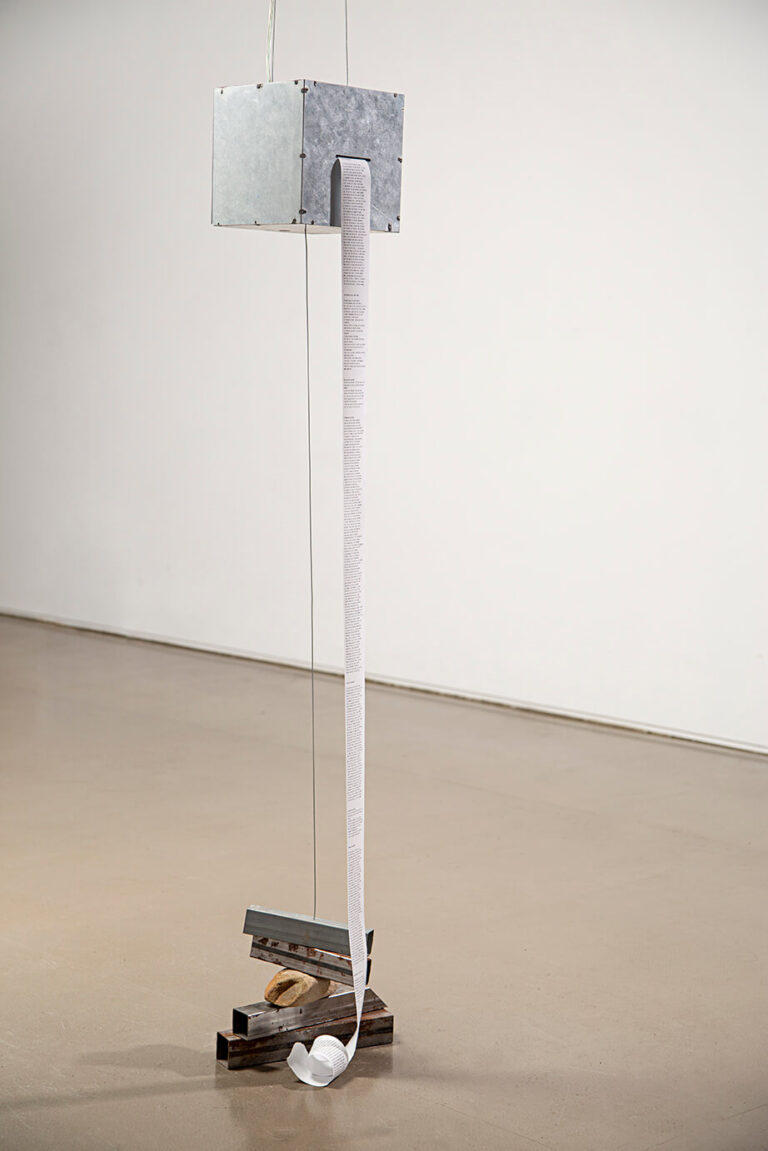
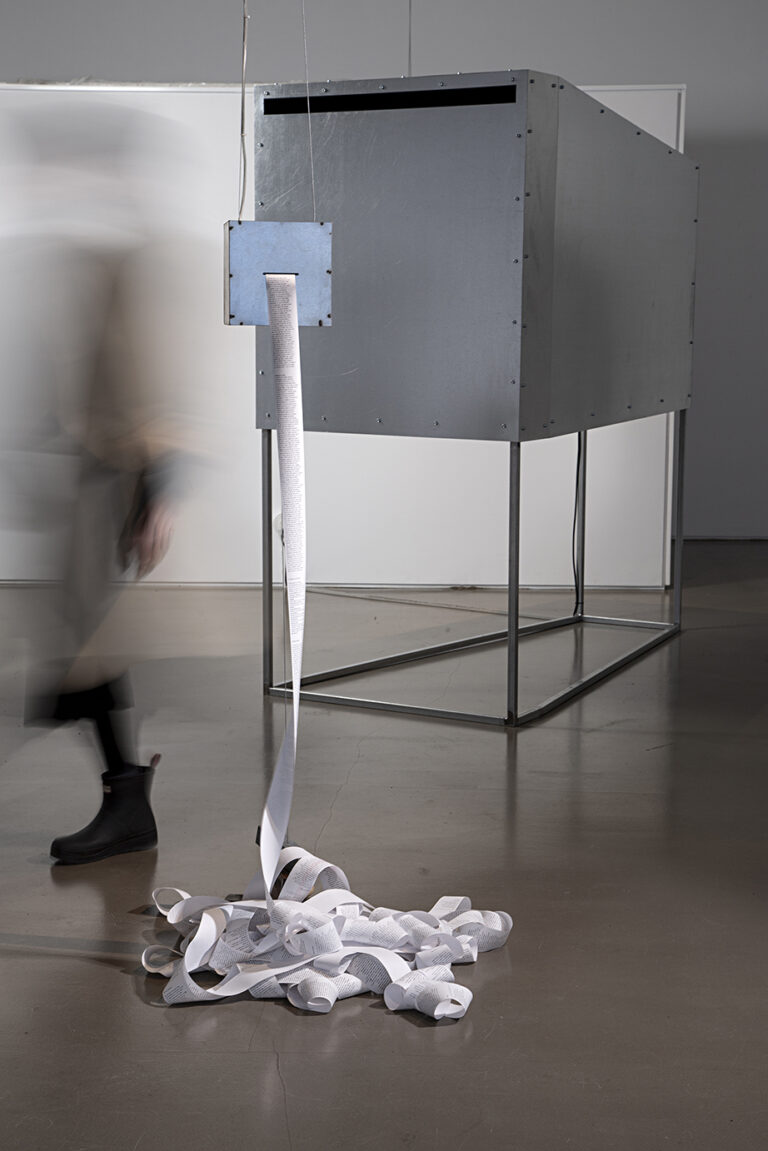
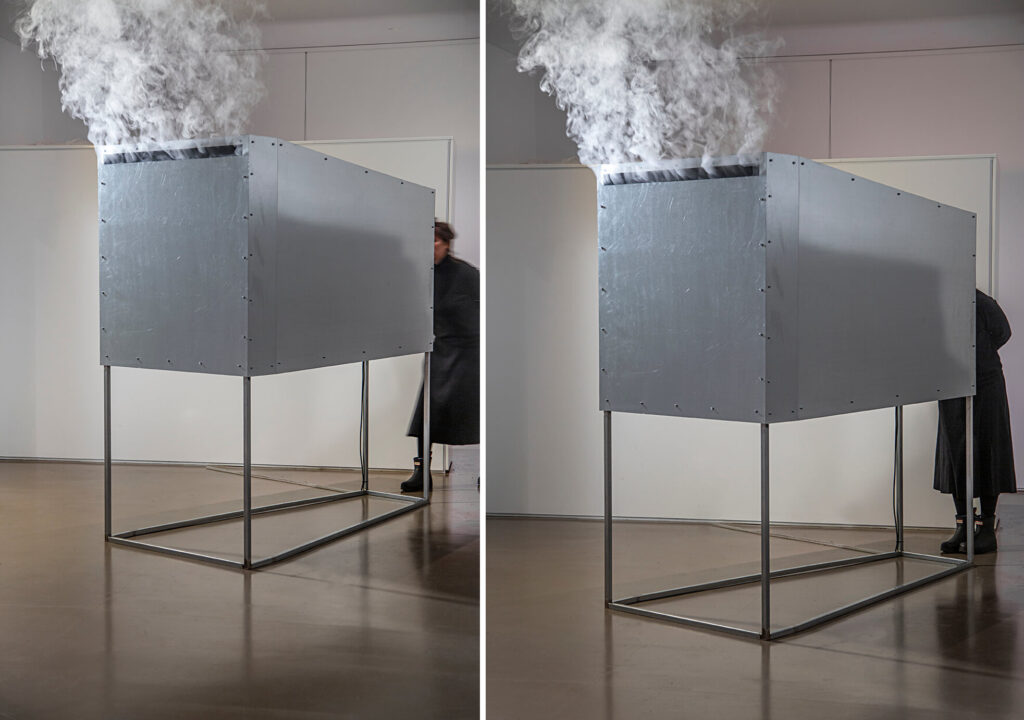
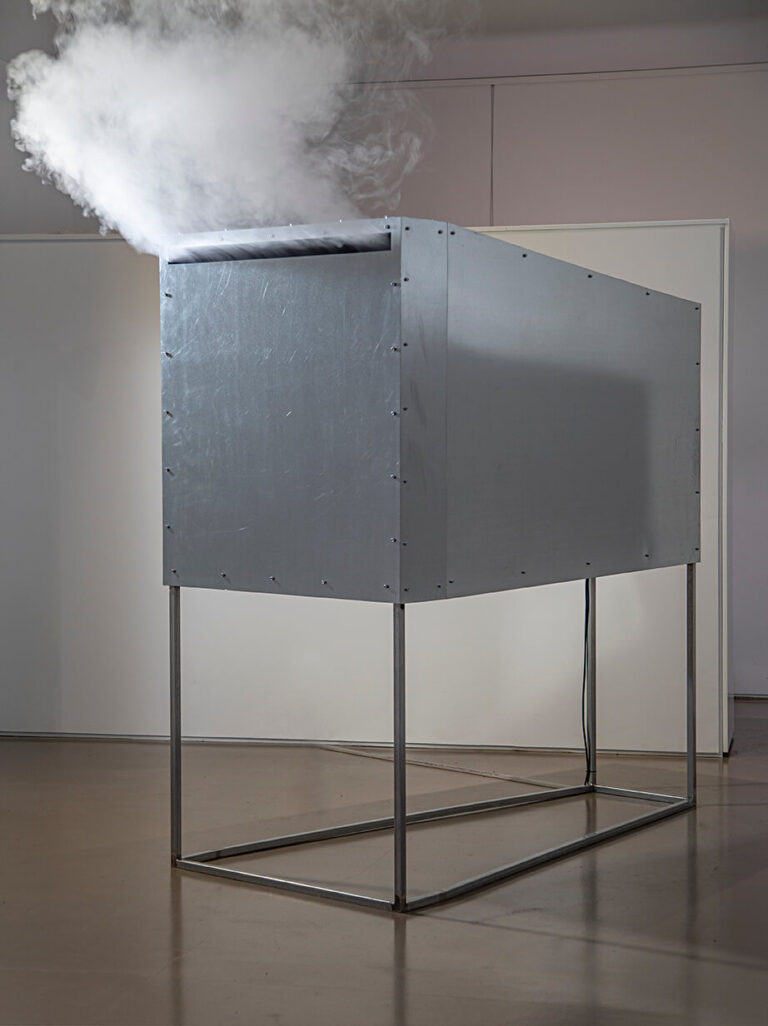
THE SKIN OF THE EARTH
Following Robert Smithson’s assertion that “the city gives the illusion that earth does not exist”, Natália Loyola’s first solo exhibition at Coletivo Amarelo offers a space to critically reflect on the way we consume and construct different narratives about the earth. Of interest for a close engagement with The Skin of the Earth is the concept of geontopower as proposed by anthropologist and critical theorist Elizabeth A. Povinelli. Geontopower refers to the power of and over Nonlife beings, or, in other words, the power to decide over the value attributed to the lively (biology) and the inert (geology). In this context, Povinelli speaks about the “distributed nature of enfleshment” − about how it is based on epidermal boundaries that we develop a perception of hierarchical separation from other forms of existence (especially from Nonlife). But what happens when we think of what we are used to conceiving as Nonlife as protected by a skin? Not without problematising the fact that our capacity for empathy seems to be restricted to what we recognise as similar to us, Loyola’s multi-media installations are an exercise in coming closer to the inert − both in terms of an epidermic imaginary and its possible sensuous and ethical repercussions.
As Robert MacFarlane writes in his most recent book, in the West we have “an aversion to the underland [which] is buried in language. In many of the metaphors we live by, height is celebrated but depth is despised.” The piece Estratigrafias (2023) [Stratigraphies], which references a geological discipline that describes rock layers and their stratification, offers a first contact point with the skin of the earth and the multiple ways in which we categorise Nonlife. Composed of several acrylic boxes of different sizes stacked over each other, Loyola’s Estratigrafias contain landscape photographs shot by the artist on her journeys through Portugal and collected materials − rocks, industrial metal leftovers and discontinued geological categorisation and exhibition boxes from Lisbon’s Museu Geológico. Addressing time in various dimensions (geological, industrial and museological), the artist invites us to move and reorganise the acrylic boxes like layers of sediments, turning us into active agents in the process of constructing visual representations of the inert.
The tryptich Hipoderme da Terra (2024) [Hipodermis of the Earth] takes the history of the mining industry in the interior of Brazil, and particularly the violence contained in the exhaustion of Itabira’s Pico do Cauê [Cauê Peak] transformed into a crater, as its starting point. Carlos Drummond de Andrade, popularly known as the “poet of stone”, speaks of the Pico do Cauê as a ‘powdered mountain’ [montanha pulverizada]. On its part, Hipoderme da Terra is a triptych of distorted image, sound, and text. Hanging from the ceiling is a directional sound installation composed of the high-pitched recordings from metal being rubbed onto dry ice (solidified CO2).
These distorted metal sounds are Loyola’s own interpretation of Drummond de Andrade’s church bells which he repeatedly mentions in his poems as the sonic materialisation of iron. If back then church bells used to dictate the days, the distorted sounds recorded by Loyola point to an activity that considerably determines our contemporary existence: the mining industry. Moving on, we find a small metal box hanging from the ceiling. It contains a small printer which at the beginning and the end of the exhibition prints out a selection of poems by Drummond de Andrade. Throughout the time of the show and based on an algorithm sensible to the fluctuation of Vale’s iron price at the stock exchange, the poems will be interfered by text from Vale’s ESG portal. This portal contains information about the environmental, social, and governance performance of this major mining company. Thus, the printer stands for the contamination between the market’s apparently objective narratives and the poet’s situated counter- narratives.
Inside the biggest of the three pieces of Hipoderme da Terra, a long metal box on a plinth that resembles a mining wagon, or an old photographic camera, we find a photograph of the Pico do Cauê projected onto smoke. A technique inspired by the work of artist Rosangela Rennó, who uses smoke to blur her images, the projection points to the volatility of memory, here transposed onto the context of Itabira’s mining industry. Furthermore, the smoke points to the Industrial Revolution and the increased CO2 emissions into the atmosphere. In all of Loyola’s works the absence of humans has a double function: while it foregrounds the deep time of geology it opens an imaginary in which humanity’s impact on the Earth has become fossilized. In this scenario, the questions that remain revolve around our future ancestrality. How does our present relationship with the earth influence our language and in turn our subjectivity? And how does this reality affect what we leave behind? For whom?
curated by SOFIA STEINVORTH
TECHNICAL SHEET
CURATOR Sofia Steinvorth
ARTISTS Natália Loyola and Flavia Regaldo (Pequena Galeria)
GUEST ARTISTS Julián D’Angiolillo, Maura Grimaldi, Nico Espinoza, Réka Csiszér and Victor Gonçalves
EXHIBITION PROJECT Heloisa Vivanco
EXHIBITION PRODUCTION Allegra Zanirato (Cosebelle)
CONSULTANCY AND TECHNICAL FACILITATION Bernardo Santos
ENGLISH TEXT REVISION Madeleine Everington
A PELE DA TERRA
Seguindo a afirmação de Robert Smithson de que “a cidade dá a ilusão de que a terra não existe”, a primeira exposição individual de Natália Loyola no Coletivo Amarelo oferece um espaço para refletir criticamente sobre a forma como consumimos e construímos diferentes narrativas sobre a terra. O conceito de geontopoder, proposto pela antropóloga e teórica crítica Elizabeth A. Povinelli, é de interesse para um envolvimento próximo com The Skin of the Earth. O geontopoder refere-se ao poder de e sobre os seres não vivos, ou, por outras palavras, o poder de decidir sobre o valor atribuído ao vivo (biologia) e ao inerte (geologia). Neste contexto, Povinelli fala do “carácter distribuído do enfleshment” – de como é com base nos limites epidérmicos que desenvolvemos uma perceção de separação hierárquica de outras formas de existência (especialmente da Não Vida). Mas o que é que acontece quando pensamos naquilo que estamos habituados a conceber como Não-Vida como estando protegido por uma pele? Não sem problematizar o facto de a nossa capacidade de empatia parecer restringir-se àquilo que reconhecemos como semelhante a nós, as instalações multimédia de Loyola são um exercício de aproximação ao inerte – tanto no que diz respeito a um imaginário epidérmico como às suas possíveis repercussões sensoriais e éticas.
Como Robert MacFarlane escreve no seu livro mais recente, no Ocidente temos “uma aversão ao subsolo [que] está enterrado na linguagem. Em muitas das metáforas em que vivemos, a altura é celebrada, mas a profundidade é desprezada”. A peça Estratigrafias (2023), que faz referência a uma disciplina geológica que descreve as camadas de rocha e a sua estratificação, oferece um primeiro ponto de contacto com a pele da terra e as múltiplas formas de categorizar a Não Vida. Compostas por várias caixas de acrílico de diferentes tamanhos empilhadas umas sobre as outras, as Estratigrafias de Loyola contêm fotografias de paisagens captadas pela artista nas suas viagens por Portugal e materiais recolhidos – rochas, restos
de metais industriais e caixas descontinuadas de categorização geológica e de exposição do Museu Geológico de Lisboa. Abordando o tempo em várias dimensões (geológica, industrial e museológica), a artista convida-nos a deslocar e reorganizar as caixas de acrílico como camadas de sedimentos, tornando-nos agentes activos no processo de construção de representações visuais do inerte.
O tríptico Hipoderme da Terra (2024) tem como ponto de partida a história da mineração no interior do Brasil e, particularmente, a violência contida no esgotamento do Pico do Cauê, em Itabira, transformado em cratera. Carlos Drummond de Andrade, popularmente conhecido como o “poeta da pedra”, fala do Pico do Cauê como uma “montanha pulverizada”. Por seu lado, Hipoderme da Terra é um tríptico de imagem, som e texto distorcidos. Pendurada no teto está uma instalação sonora direcional composta por gravações agudas de metal a ser esfregado em gelo seco (CO2 solidificado).
Esses sons metálicos distorcidos são a interpretação de Loyola dos sinos de igreja de Drummond de Andrade, que ele menciona repetidamente em seus poemas como a materialização sonora do ferro. Se naquela época os sinos das igrejas ditavam os dias, os sons distorcidos gravados por Loyola apontam para uma atividade que determina consideravelmente nossa existência contemporânea: a mineração. Seguindo em frente, encontramos uma pequena caixa metálica pendurada no teto. Ela contém uma pequena impressora que, no início e no final da exposição, imprime uma seleção de poemas de Drummond de Andrade. Ao longo do tempo da exposição e a partir de um algoritmo sensível à flutuação do preço do ferro da Vale na bolsa de valores, os poemas serão interferidos por textos do portal ESG da Vale. Este portal contém informações sobre o desempenho ambiental, social e de governação desta grande empresa mineira. Assim, a impressora representa a contaminação entre as narrativas aparentemente objectivas do mercado e as contra-narrativas situadas do poeta.
No interior da maior das três peças de Hipoderme da Terra, uma longa caixa metálica sobre um plinto que se assemelha a um vagão mineiro ou a uma velha câmara fotográfica, encontramos uma fotografia do Pico do Cauê projectada sobre fumo. Técnica inspirada no trabalho da artista Rosangela Rennó, que utiliza a fumaça para borrar suas imagens, a projeção aponta para a volatilidade da memória, aqui transposta para o contexto da mineração em Itabira. Além disso, a fumaça remete à Revolução Industrial e ao aumento da emissão de CO2 na atmosfera. Em todas as obras de Loyola, a ausência de humanos tem uma dupla função: ao mesmo tempo em que coloca em primeiro plano o tempo profundo da geologia, abre um imaginário no qual o impacto da humanidade sobre a Terra se tornou fossilizado. Neste cenário, as questões que permanecem giram em torno da nossa ancestralidade futura. Como é que a nossa relação atual com a Terra influencia a nossa linguagem e, por sua vez, a nossa subjetividade? E como é que esta realidade afecta o que deixamos para trás? Para quem?
curadoria de SOFIA STEINVORTH
FICHA TÉCNICA
CURADORIA Sofia Steinvorth
ARTISTAS Natália Loyola and Flavia Regaldo (Pequena Galeria)
ARTISTAS CONVIDADS Julián D’Angiolillo, Maura Grimaldi, Nico Espinoza, Réka Csiszér e Victor Gonçalves
PROJECTO EXPOSITIVO Heloisa Vivanco
DESENHO TÉCNICO Allegra Zanirato (Cosebelle)
CONSULTORIA E FACILITAÇÃO TÉCNICA Bernardo Santos